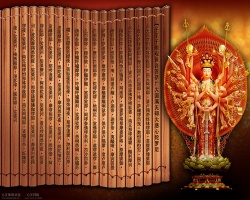The Kalachakra was transmitted from India into Tibet
The Kalachakra was transmitted from India into Tibet via a number of different guru lineages from the 11th through the 14th century. As mentioned previously, two of the most important lineages are styled the “Rwa tradition” and the “’Bro tradition.”
According to Bu ston, the translator Rwa Chos rab traveled to central Nepal (probably Patan) where he studied under the pandit Samantashri for five years, ten months, and five days. Having mastered all the Kalachakra doctrines, Chos rab invited his guru to Tibet where together they continued the work of translating the various texts and disseminating the teachings. The Rwa tradition continued in Tibet through Rwa Chos rab’s son and grandson.
The ’Bro tradition originated from the visit of the Kashmiri pandit Somanatha to Tibet. Together with ’Bro Shes rab grags, Somanatha translated the Vimalaprabha into Tibetan and established this important teaching and practice lineage. By the middle of the 14th century the Sri Kalacakra had been translated into Tibetan fifteen or sixteen times; the Vimalaprabha more than ten. This is really remarkable given the size and complexity of these texts. No other Buddhist text received a comparable amount of attention from the great Tibetan translators.
The Rwa and ’Bro lineages continued through successions of teachers and eventually flowed together. One particularly noteworthy name from this period is that of Bu ston Rin chen grub (1290- 1364). Bu ston is perhaps best known for his part in the editing of the Tibetan canon, but later lamas especially praised him for his key role in the preservation of all of the different types of tantra exposition and practice.
Bu ston made a close study of the Kalachakra; he produced a revised, annotated edition of the canonical translations of the Sri Kalacakra and the Vimalaprabha. He also wrote a number of important monographs on special topics in the Kalachakra.
rje Tsong kha pa bLo bzang grags pa (1357-1419), founder of the dGe lug pa school, studied the Kalachakra under a disciple of Bu ston. Tsong kha pa in turn transmitted it to his disciple mKhas grub dGe legs dpal bzang (1385-1438). mKhas grub mastered the entire Kalachakra system and composed a commentary on the Vimalaprabha that is enormous even by Tibetan literary standards. Entitled The Illuminator of Reality (De kho na nyid snang bar byed pa), it occupies three large volumes in his collected works.
The dGe lug pa school maintained the study and practice of the Kalachakra over the centuries. The Panchen Lamas of the Tashilhunpo monastery in gTsang were especially active in the practice of the Kalachakra. At Tashilhunpo there was a special school devoted to the Kalachakra (Dus ’khor grwa tshang).
The third Panchen Lama, bLo bzang dpal ldan ye shes (1738- 1780), composed a prayer in which he expressed the wish to be born in Shambhala during the reign of Kalki Raudra Chakri.28 He also wrote a book that came to be known as the Guidebook to Shambhala (Sambha la’i lamyigf- ' In addition to a more general account of Asian history and geography, the book describes the route to Shambhala and the means by which a person can travel there. This portion of the book is based, to a great extent, on another “guidebook” translated from Sanskrit, the Kalapavatara, (Entrance to Kalapa), the capital of Shambhala; Peking *5908).
rGyal ba ’Jam dpal rgya mtsho, the 8th Dalai Lama (1758-1805), introduced the Kalachakra into his personal monastery, the rNam rgyal grwa tshang. From that time to the present, the rNam rgyal grwa tshang has continued the study and practice of the Kalachakra, including the full complement of the intricate Kalachakra rituals.
His Holiness Tenzin Gyatso, the 14th Dalai Lama, belongs to a Kalachakra lineage that traces itself back to the teaching of the Paramadibuddha at Shri Dhanyakataka. His Holiness has been extremely generous in making this religious tradition available to the people of the West.
At present the Kalachakra tradition appears to be in danger of extinction. Due to the extreme complexity of this tantra, its masters have never been numerous. Today, following the Chinese of invasion of Tibet, their number has dwindled to a handful of refugees in India.
